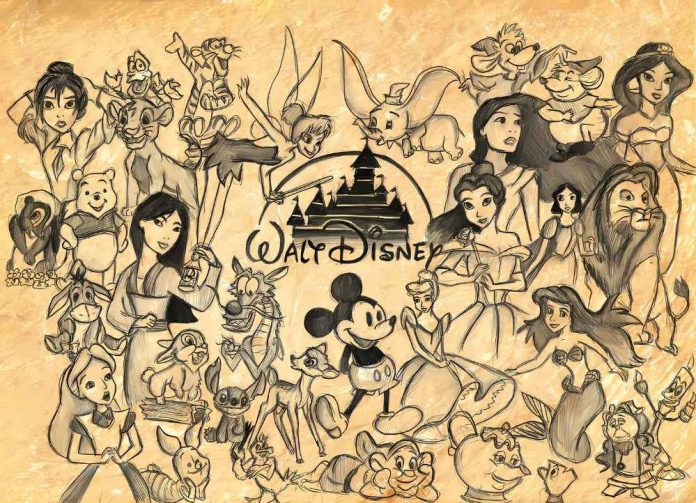
Since the release of Snow White and the Seven Dwarfs in 1937, Disney’s animated features have been synonymous with unforgettable music that not only enhances storytelling but also leaves a lasting impact on audiences. With the recent release of Wish in 2024, Disney continues to demonstrate its evolving approach to music, reflecting shifts in musical styles, cultural influences, and audience expectations.
A Journey Through Disney’s Musical Evolution
Disney’s approach to music in its animated features has significantly evolved over the decades. In the early years, the music in films like Snow White and Cinderella was deeply rooted in the classical traditions of Hollywood’s Golden Age. These scores, characterized by sweeping orchestral melodies, were designed to evoke emotions, establish character identities, and drive the plot forward.
The 1990s marked a pivotal shift with the Disney Renaissance, starting with The Little Mermaid and Beauty and the Beast. These films introduced a Broadway-inspired approach to songwriting, where songs were more integrated into the storyline, advancing the plot and deepening character development. Collaborations with renowned songwriters like Alan Menken were crucial in defining Disney’s musical style during this era.
In recent years, Disney has continued to innovate, blending traditional musical elements with contemporary sounds. Films like Moana and Encanto incorporate diverse musical genres and cultural influences, reflecting a broader, more inclusive approach to storytelling. The recently released Wish exemplifies this evolution, blending classic Disney musical elements with modern pop influences, and has been widely praised for its ability to appeal to both nostalgic fans and new audiences.
Cultural Impact of Disney’s Music
Disney’s music has not only shaped its films but also profoundly influenced broader cultural trends. From the early days of Snow White, Disney songs have become cultural landmarks, often crossing over into mainstream music charts. Songs like “When You Wish Upon a Star” from Pinocchio and “Let It Go” from Frozen have become anthems that transcend their original films, resonating with generations of listeners.
Moreover, Disney’s ability to incorporate various cultural elements into its music has introduced global sounds to a wider audience. Films like The Lion King brought African rhythms into the mainstream, while Coco celebrated Mexican culture through its vibrant and authentic soundtrack. This blending of cultures in Disney’s music not only enriches the films but also fosters a deeper understanding and appreciation of different cultural traditions among global audiences. Wish continues this tradition, incorporating a diverse range of musical influences that reflect the global nature of Disney’s audience.
Financial Success and Industry Impact
Disney’s original music has not only been culturally impactful but also financially lucrative. The company has generated billions of dollars in revenue from its music alone, through album sales, streaming, and licensing deals. Iconic soundtracks like The Lion King, Frozen, and Beauty and the Beast have sold millions of copies worldwide. Songs like “Let It Go” have topped charts globally, further solidifying Disney’s dominance in the music industry.
Beyond revenue, Disney’s approach to music has provided significant opportunities within the music industry. Composers, lyricists, musicians, and vocal artists have all benefited from Disney’s emphasis on high-quality music production. The company’s commitment to working with top-tier talent has elevated the status of music in animation, turning songwriters like Alan Menken and Lin-Manuel Miranda into household names. Disney’s music has also been a gateway for new artists and musicians to gain exposure, contributing to the industry’s diversity and vibrancy.
Disney’s use of music has also elevated the meaning of the field, showcasing the power of music to enhance narrative and emotion in storytelling. The integration of music into animated features has set a standard in the industry, influencing how other studios approach music in film. This emphasis on music as a core element of storytelling has led to an increased appreciation for the art form, creating more jobs and opportunities for musicians across the globe.
Impact on Audiences
The impact of Disney’s musical approach on audiences is undeniable. For decades, Disney songs have resonated with viewers of all ages, becoming an integral part of many people’s childhoods and continuing to evoke nostalgia in adults. The emotional depth and memorable melodies of Disney music create strong connections with audiences, making these songs enduring favorites.
Disney’s strategy of weaving music into the fabric of its narratives ensures that these songs are not just background music; they are essential to the storytelling. This approach has led to some of the most iconic moments in animation history, from the romantic ballads in Beauty and the Beast to the empowering anthems in Frozen. The music in Wish has already made a significant impact, with its standout tracks quickly becoming favorites among audiences, demonstrating Disney’s continued relevance in the world of animated musicals.
Conclusion
At Music Industry Weekly, we recognize the unparalleled role that Disney’s music plays in shaping not just its animated features but also broader cultural and musical landscapes. From the classic scores of Snow White to the culturally diverse sounds of Wish, Disney continues to set the standard for how music can enhance storytelling. As we reflect on the release of Wish, it is clear that Disney’s musical legacy will continue to evolve, captivating audiences and leaving an indelible mark on the world of animation and beyond.







